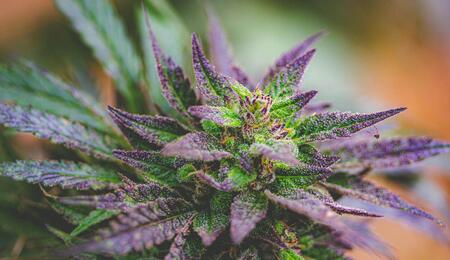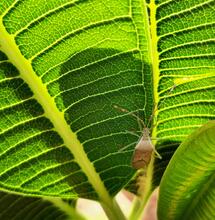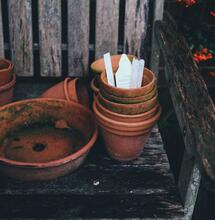The Top 7 Most Common Mistakes in Growing Marijuana

While growing weed is definitely not rocket science, mistakes in the process can happen easily. Find out the most common mistakes that even experienced gardeners do and learn how to steer clear of any threat to diminish your marijuana plant.
Let's say you are an avid pot smoker and you've figured instead of chasing dealers and buying overpriced second class dope you will save a pound if you grow your own weed. You are not precisely green-fingered, but you thought: Heck, How hard can it be, it's just like growing tomatoes, right? - Months into your 'weed growing journey' you notice a zero progress, or even worse, your pot has grown but is slowly dying. Naturally, you are bummed out and ask yourself: Where did I go wrong? -Not to burst your 'green bubble' but probably at many stages.
Common Mistakes in Growing Marijuana
1. Overfeeding the cannabis plants
A common mistake in growing marijuana, often made by novice weed gardeners, is overfeeding the cannabis plants. You check on your plants every day, but you're worried that the buds might not be developing fast enough. We humans, instinctively think food equals growth, but overfeeding the plants will have a counter effect and overeaten plants can lead to a dead garden. How to do it right There are two forms of nutrients, organic and non-organic. Organic nutrients come from manure, compost and other refined minerals in the ground. These nutrients release slowly into the soil and are not readily available for the plant to take up in excess, which means they are your safest bet to avoid overfeeding. Observe your plants and consult your local grow store for advice. Nutrients allow you to grow quality cannabis, but they can also harm the entire growing process.
2. Overwatering the plants
Overzealous cannabis gardeners tend to destroy their crops more often by overwatering than underwatering. Same as overfeeding, overwatering your plants will do them no good. An excessive amount of water causes the cannabis plants to rot, leaving them to suffocate and die. Once root rot sets in, it would be impossible to remove and you will have to start from scratch.
How to do it right
Instead of guessing how much water your cannabis plants may need, you can install a drip irrigation system before you plant. The drip system features a timer and is much efficient in delivering water to the plant.
3. Using the wrong water pH for cannabis
If you're using too acidic or basic water for your cannabis plants, you can run into some real issues. Ideally, the water should be between a pH of 6.0 to 7.0. Any water outside of this range will deprive your plants of nutrients because the water is either too acidic or lacking acidity.
How to do it right
Check the pH level of the water source regularly. You can also buy filters to maintain a specific pH level and/or put additives in your water to lower or increase the acidity.
4. Screwing with the seeds
If you are new to growing weed, it might feel overwhelming in the beginning. You might feel intimidated to start cultivating from seeds and instead think about doing clone plants. Don't! While turning a tiny seed into a small seedling and eventually into a big plant rich with colas is definitely something else, it’s not that hard.
How to do it right
All it takes to stimulate the seed to grow when starting is soil, some natural sunlight and water. You don’t need any special equipment to optimise the growing process as you are not there yet. Just focus on the seeds and you’ll figure out whether you need artificial lights or drip systems a bit later on. Growing cannabis seedling is much better than doing a clone.
Another perk from growing from seeds is that plants are going to stay healthier this way, more resilient to disease.
5. Growing suspicious seeds of unknown background
It happens often: someone hands you a bag of seeds of 'great dope' for you to grow, and you figure why not- after all, it's free. However, the problem is, you don't have the slightest idea of what type of cannabis the seeds are, whether it's Indica, Sativa, autoflowers, hybrid or something that gives a super hazy effect when smoked. First of all marijuana isn't just marijuana.
There are considerable differences in growing characteristics among various cannabis seeds. A picky photoperiod Sativa will undoubtedly behave differently than an Indica autoflower. Some strains may be suitable to grow in a warmer climate, while others may require a hot, sunny environment. You get the idea.
How to do it right
In short, it's crucial to know what you're actually growing. Make sure you get your seeds from a reliable source.
6. Uncontained cannabis smell
Another thing worth noting is that growing cannabis is a fairly aromatic experience. The more cannabis plants you have, the stronger the odor there’s going to be, especially as your plants enter a flowering stage. While it’s easy to park your plants in a secluded location, don’t forget to also take measures to cover up the smell.
How to do it right
There are several things you can try to disguise the smell of your pot plants. For smaller grow try and see whether odor neutralizes will work. For bigger grow, you may want to consider active carbon filter and fan systems.
7. Unsuitable climate control
Whether you are growing your weed outside, inside or in a greenhouse, you need to be fully aware of the climate. Temperature and humidity are essential to the growth of quality cannabis. Marijuana plants can survive in extreme climates, but not routinely.
How to do it right
The humidity level of your garden should always be on the lower side. Humidity provides a breeding ground for mold, which is most likely to decompose your green pals. Seedlings like a higher humidity content, but as the plant develops, humidity should decrease. Starting around 60% and reducing to around 40% is generally considered good practice.
Now that you are aware of some of the most common mistakes in growing marijuana, take your time to inspect your crops if you are already growing and see if there is anything you can do to improve. If you are starting from zero, follow these basics without fear. Observe how your plant behaves at any stage of the growing process and learn from the mistakes you do.



.png)